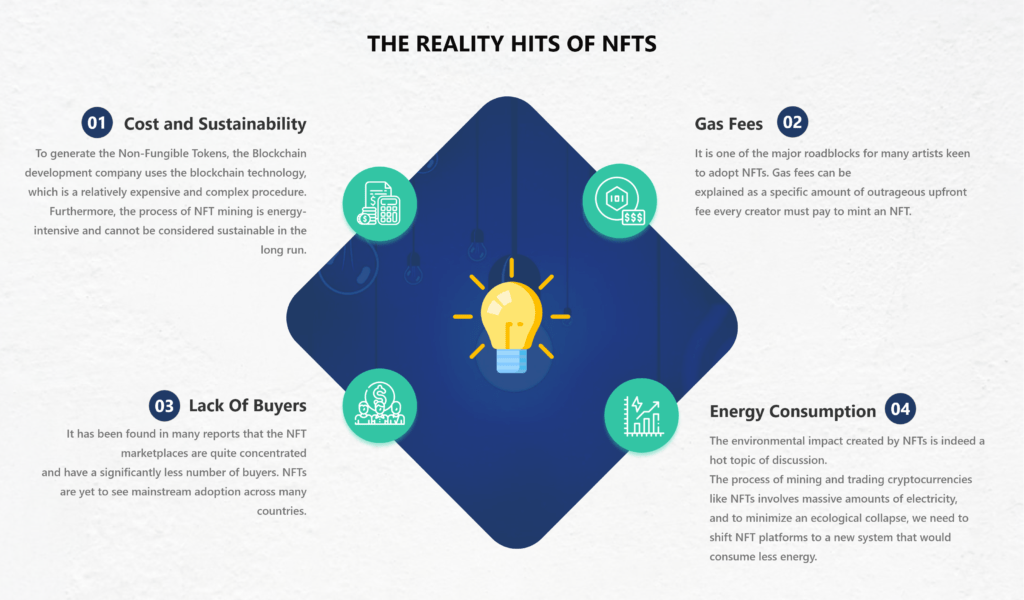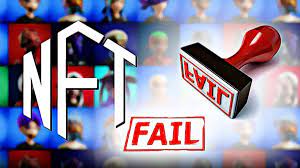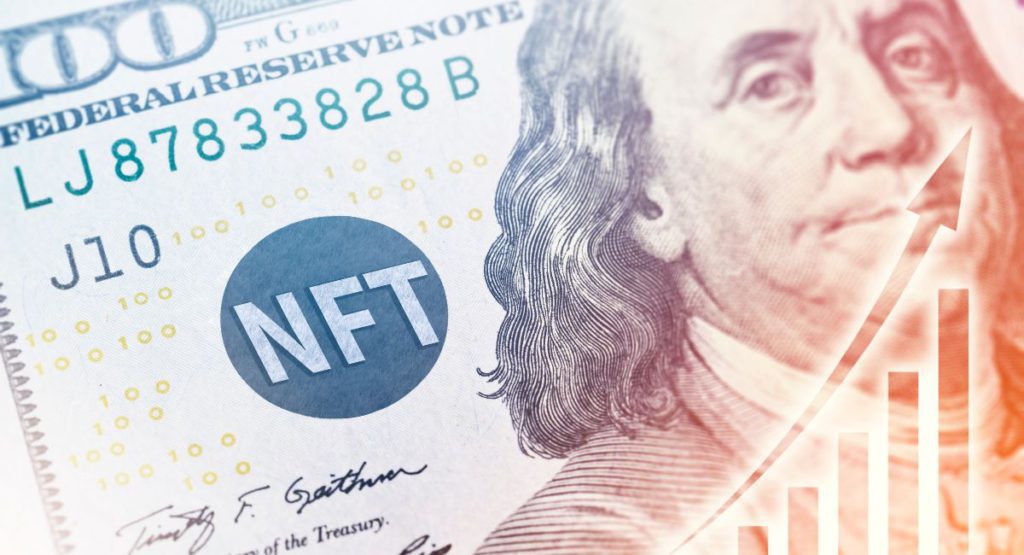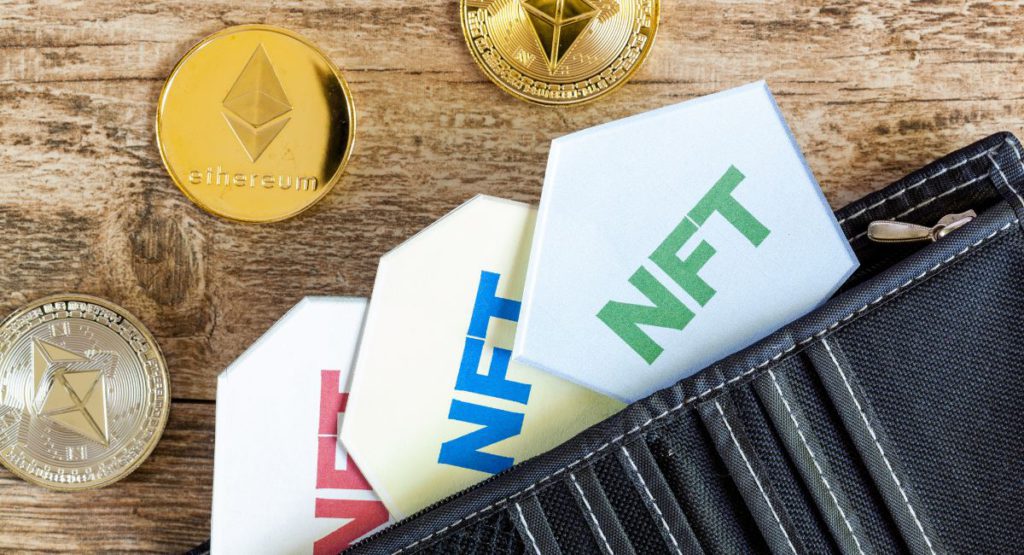Why Are NFT Failing: Can They Survive The Shifting Landscape?

Non-fungible tokens, or NFTs, have taken the world by storm in recent years. These unique digital assets, often tied to art, collectibles, and even virtual real estate, promised to revolutionize ownership and authenticity in the digital age. However, despite the initial hype, the NFT failing is the recent outcome as they are facing a series of challenges that raise the question: Can they survive the shifting landscape of the digital market?
The NFT Hype: A Meteoric Rise and Its Implications
The world of Non-Fungible Tokens (NFTs) witnessed a meteoric rise that set the digital landscape abuzz with unparalleled hype and fanfare. These unique digital assets promised a revolution in the way we perceive ownership, authenticity, and value in the digital age. The excitement was palpable, and it sparked a frenzy of activity within the NFT ecosystem.
Digital Artists and Creators on the Move
Digital artists and creators found themselves at the forefront of this digital gold rush. NFT marketplaces beckoned, offering an unprecedented opportunity to monetize their creations directly, bypassing traditional intermediaries. The allure of decentralization, where artists could connect directly with their audiences and receive a more substantial share of the profits, was a tantalizing prospect. This promise of creative empowerment fueled their enthusiasm to embrace NFTs.
High-Profile Sales That Stole the Spotlight
The NFT phenomenon’s ascent to stardom was punctuated by jaw-dropping high-profile sales that captured global attention. Among these, the sale of Beeple’s digital artwork for a staggering $69 million stands out as a milestone. This monumental transaction sent shockwaves through the art world and beyond, leaving an indelible mark on the collective consciousness. It showcased the immense potential for artists to break free from the limitations of the traditional art market and access a vast, global audience directly.
A Complex and Uncertain Path Forward
However, as the euphoria of the NFT gold rush subsided, a more nuanced reality emerged. The road ahead for NFTs proved to be a complex and uncertain one. The initial enthusiasm, while well-founded, concealed a series of challenges and paradoxes that demand careful consideration.
The implications of NFTs’ rise are multifaceted, touching upon aspects of art, culture, technology, and economics. The intersection of these factors creates a dynamic landscape where artists, collectors, and innovators navigate uncharted territory. This complexity extends to environmental concerns, regulatory frameworks, market saturation, and the underlying speculative nature of NFTs.
NFTs, while holding the promise of revolutionary change, must grapple with these complexities to forge a sustainable and inclusive future. The NFT hype, with its grand beginnings, has set the stage for a captivating journey filled with both promise and uncertainty, where the art and technology worlds collide in a digital revolution that’s still unfolding.
2022… let’s launch our own crypto!! “Badass, let’s do it. But what will it do?” We knew we had to build a real use case, so that’s what we did. We stacked up NFT’s, broke through roadblocks, and created some cool shit.
— The Blockchain Cartel (@blockchncartel) October 11, 2023
The Roadblocks
NFTs have encountered several challenges that are casting doubt on their long-term viability.
- Environmental Concerns: One of the most significant criticisms of NFTs is their impact on the environment. Many NFTs are built on blockchain platforms that consume vast amounts of energy. As concerns about climate change grow, the carbon footprint of NFTs has become a major issue.
- Lack of Regulation: The absence of clear regulations in the NFT space has created an environment ripe for fraud, copyright infringement, and scams. Artists and collectors face significant risks, as provenance and authenticity can be hard to establish.
- Market Saturation: The NFT market has become crowded, with an overwhelming number of tokens available. This saturation can make it difficult for new and emerging artists to gain recognition and for collectors to make informed choices.
- Speculative Bubble: Some experts argue that the NFT market has experienced a speculative bubble, with prices driven more by hype and investment speculation than by genuine value. This bubble could burst, leaving many with devalued NFT assets.

Top 5 Reasons for NFT failing
1. Environmental Impact: A Disastrous Toll on the Planet
From the outset, concerns about the environmental ramifications of NFTs have been prominent. The energy-intensive process of creating and trading these digital assets has raised alarm bells due to its adverse impact on the environment. A report by the Cambridge Centre for Alternative Finance revealed that the energy consumption of the Ethereum blockchain, a popular platform for NFTs, is equivalent to the entire energy consumption of Qatar, a nation. Environmentalists have criticized the ecological sustainability of NFTs, attributing this strain to the emission of millions of tons of carbon dioxide, exacerbating our planet’s already precarious climate situation.

2. Regulation and Verification Challenges: A Breeding Ground for Fraud
NFTs faced exaggeratedly high risks of fraud and scams right from their inception. Being a relatively nascent technology, the absence of robust regulation made it a breeding ground for unscrupulous individuals seeking to exploit those unfamiliar with the nuances of NFTs. Fake NFTs flooded online marketplaces, and NFTs were traded without the consent of the original artists, thereby casting a shadow over the reliability and authenticity of these digital assets. This environment raised concerns about the potential exploitation of artists and buyers, with a variety of NFT scams, including phishing, bidding scams, pump-and-dump schemes, and counterfeit NFTs further exacerbating these worries.

3. Limited Resale Value: Speculative Nature Unveiled
The speculative nature of non-fungible tokens can’t be disregarded when discussing NFTs. The initial hype around these assets was driven largely by speculation and hype rather than inherent value. As a result, the NFT market experienced a significant downturn, leaving many artists and buyers with assets that had dramatically depreciated. While it’s true that a select few NFTs commanded high prices in the early days, this was an exception, and for most participants, the speculative bubble had burst.

4. Inaccessibility: The Barrier of Entry
The high cost associated with creating and trading NFTs has raised concerns about their accessibility. Established artists and musicians have certainly reaped rewards from NFTs, but for up-and-coming talents, participation in the NFT market is a daunting prospect. The prohibitive costs of minting and selling NFTs act as a barrier for indie artists, leading to a concentration of power and influence among a select group of artists and collectors. This has prompted discussions about inclusivity and the democratization of NFTs.

5. Copyright Infringement: A Complex Legal Quagmire
A paramount issue with NFTs is the presence of copyrighted material, including music and artwork. While it is possible to tokenize one’s original work, many have used NFTs to trade copyrighted material they don’t own. Copyright infringement is exacerbated by the challenge of verifying the authenticity of digital assets within the NFT space. This has led to legal disputes where artists claim their work was used without permission to create NFTs.

Moreover, even when NFTs are created from original material, they sometimes infringe on copyright laws if they incorporate elements from other copyrighted works. For instance, if an NFT artist uses a sample from a copyrighted song, it constitutes copyright infringement. NFTs circumvent traditional licensing and royalty mechanisms, which means copyright owners may not receive their due royalties from NFT sales. This complex legal quagmire has resulted in high-profile cases that underscore the need for clarity in NFT-related copyright matters.
Can NFTs Adapt and Thrive?
The challenges faced by NFTs are significant, but the technology and concept behind them hold promise. To survive in the shifting digital landscape, NFTs must adapt in several ways:
- Sustainability: NFT platforms must transition to more eco-friendly blockchain technologies to address environmental concerns. Many are already exploring options such as proof-of-stake and layer-2 scaling solutions.
- Regulation: Regulatory clarity is essential to protect artists, collectors, and investors. Governments are beginning to take notice, and the industry itself must be proactive in developing responsible standards.
- Utility and Integration: NFTs need to prove their utility beyond digital art. They can be integrated into various industries, from gaming and music to ticketing and virtual real estate, providing real-world applications.
- Education: Educating the public about the benefits and risks of NFTs is crucial. This includes understanding the technology, verifying authenticity, and appreciating the value of owning digital assets.
- Long-Term Value: The focus should shift from short-term speculation to long-term value. NFTs must offer enduring value propositions, such as access to exclusive experiences, ongoing royalties for creators, and true ownership.
In conclusion, the NFT landscape is indeed shifting, and while the challenges are substantial, NFT failing may not be permanent as NFTs have the potential to evolve and thrive. Their survival will depend on their ability to address environmental concerns, embrace regulation, find utility in various sectors, educate users, and emphasize long-term value over speculation. NFTs may have experienced a meteoric rise and subsequent turbulence, but their ultimate fate in the digital world remains an open question, one that will be shaped by how well the industry adapts to the changing landscape and addresses the concerns of its stakeholders.
Also, read – Top 5 Biggest NFT Fails And Lesson Learned




























































